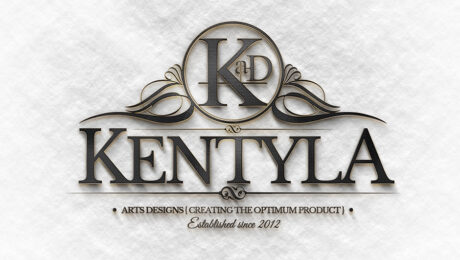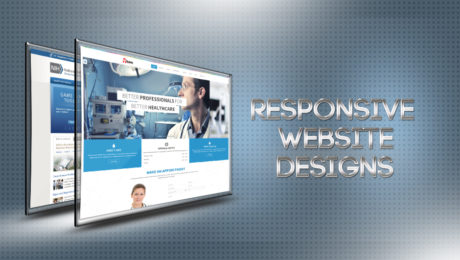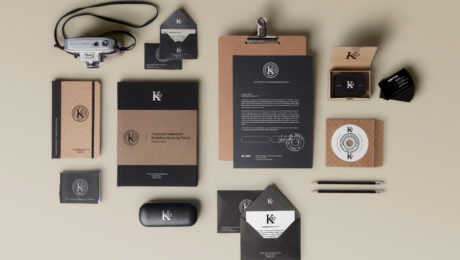Building A Successful Brand
There is no one definition that actually captures the essence of brand building in its entirety. Many people think that brand building is all about communicating and exposing your brand. That is just one side of it. The best way we can define it is that it is a process of creating value to consumers. It encompasses all things that consumers know, feel, and experience about your business in its entirety.
Having defined brand building, let’s take a look at 3 popular types of brands and what they stand for.
- Service brand- this brand is built on knowledge, culture, and experience that one has with the service delivering agency/company/people. Think of Geek Squad or Molly Maid.
- Retail brand- this brand is built on a mixture of products and service experience. Think of Chick-fil-a, Kroger, or KFC
- Product brand- is built on the experience that one has with a specific product. Think of Nike, Ford, or Sony.
Having looked at the 3 popular types of brands, let’s now proceed to look at steps involved in brand building.
1.)Define Your Brand
The first stage in brand building is defining your brand. This is a very critical step as it ultimately determines what your brand truly stands for. When defining your business brand, you should create a checklist of its core strengths. Similarly, if you’re defining a personal brand, you should look at the skills and expertise that you possess especially those which stand out. On the same token, you also need to know what your brand stands for and what is important for your brand (brand values). Your values should in one way or another show that you are contributing to environmental, social, and economic well-being of consumers. You may not realize some of these important aspects of brand building immediately, until you look at them objectively.
2.)Differentiate and Position Your Brand
Before embarking on brand building, you have to take time to differentiate it so that you can attract attention and stand out from competitors. To differentiate your brand, you have to create a unique advantage in the mind of consumers not merely getting attention by brand building colors or logos or other superficial elements. Once you come up with a unique value proposition, you should use a good branding strategy to position your brand in a way that will help consumers see and appreciate the greater value of your brand over competing ones in the market.
3.)Build and Expose Your Brand
As I indicated earlier, brand building is not a one off thing. Building a unique and powerful personal or business brand takes time and consistency. To build your personal brand, you have to keep reinforcing your values and skills by taking up new roles and assignments that will give you more exposure. Alternatively, you can use promotional channels, blogs, forums, and social media (LinkedIn, Twitter and Facebook) to create a voice for your personal or business brand.
When building your brand, you should also endeavor to develop brand personality (what people know, think, and say about you). This is what drives or motivates people to identify with and engage with your brand. The truth is; if you execute your brand building strategies consistently, then you will easily establish a pattern that will forever be associated with your brand name.
4.)Personalize Your Brand
If you want your brand building campaign or brand to be successful, then you have to personalize it. It is important to give your brand an identity. Let consumers see and experience the personality of your brand in its entirety. Look at your brand as something that a consumer wants to identify with pretty much as they would with their favorite cars, cellphones, or computers.
As you engage in brand building, you should also invite customers to be co-creators of brand values so that they can feel that they also own it and relate with it. Top brands encourage consumer-brand interaction by personalizing products to meet the needs and preferences of consumers. When you personalize your brand, you give consumers reason to participate and engage with your brand for a lifetime.
5.)Review Your Brand
Your brand is not static; it will go through a range of motions in its lifetime. Depending on your brand strategies, your brand will either grow in strength, or remain dormant, or recede with time. In the brand cycle, new events, changes, and circumstances bring challenges and opportunities to enhance the value of your brand or re-establish it. All these possibilities should give you the impetus to take charge of your brand building activities.
As your brand name grows, so do the responsibilities and expectations to continue with brand building. The best way of ensuring brand growth is reviewing your activities and evaluating your successes through metrics such as levels of brand awareness and levels of engagements. Regular reviews will help you seize and exploit new opportunities while upholding your commitment to remain true to your vision and brand strategy. It will also help you steer your brand in the right direction and keep it relevant as you move into the future.
As you can see, brand building is not a one off thing. You have to define your brand, differentiate, present it, and review what your brand stands for from time to time. It is very important to be clear about your branding strategies and how you’re going to implement them. You should also adopt brand strategies that will add value to your consumers and help them develop the right impression of your company and what it truly stands for.
- Published in Blog, Marketing, Networking
Using An App To Enhance Your Business
The Importance of Mobile Apps for Your Business
The customers in today’s world are on the move and they’re using mobile application platforms to get there. Whether they use mobile phones, tablets, or other mobile devices they have all the information they need. That’s why mobile apps are so much important in today’s market.
You need to understand that mobile apps allow customers to have all your information at their fingertips. Also, it is important that your app works on multiple mobile application platforms. But for beginning, start with one platform.
No matter what your business is, a mobile app can help you get and retain customers., and that’s a fact. We all know that the first place customers go to search for a product or service is online. If your business is available online, and plus you have an app that users can download to their devices, your business will make really good impression. At a glance they will be able to see and open your app and purchase from your business.
Here are some of the biggest benefits of mobile apps for businesses. You can:
- build loyalty
- reinforce your brand
- increase your visibility
- increase your accessibility
- increase sell-through
- increase exposure across mobile devices
- connect you with on-the-go consumers
There are more of course. These are just some of the biggest. As you can see, benefits can be huge.
Not only that your business will have benefits, but your customers as well. Here are some of the benefits of mobile apps for your customers. They can:
- easy access to your inventory
- get notifications of special events, launches, etc.
- have one-touch access to your contact information
- get directions to your location from wherever they are
- make fast, seamless appointment scheduling
Until now, it should be really clear – the future of your business depends on your ability to get your business implanted on the phones of customers all around the world. You need to go mobile and be prepared to grow.
Important fact to note: Promotional email messages receive about a 4% read rate. PUSH notifications 97%.
Not only will your mobile app be a cool marketing tool (allowing you to say things like, visit our website to download our free app!) that will help get people returning to your website, but it will allow you to engage with your customers in a whole new way.
The Importance of Quality Logo Design
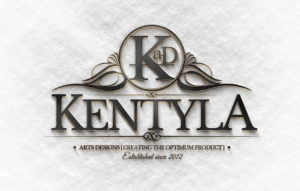
More than 40 years ago, Nike bought its logo from a college student for $35.
When companies hear that logos can come with such a low price, they often don’t understand why we might charge more than that.
Non-designers also sometimes think that a logo shouldn’t cost much because of its scope — since it’s just one measly design, it should cost way less than, say, a website.
When KAD offers a logo design proposal, we present every option available, but our statement is this:
“You’ll use this logo everywhere.”
Logos are used hundreds — if not thousands — of times. Potential clients must understand that the logo will appear on everything from websites and business cards to email signatures and social media profiles. Depending on the organization or business, the logo could end up on movie screens or billboards, too.
Kentyla Arts Designs is most certain to communicate to potential clients the important fact that, because a logo is so widely used, it’s incredibly valuable. It is not just a simple file.
“It takes time to make the perfect logo.”
People tend to think that a skilled, professional designer should only need a few hours to throw a logo together. Non-design types don’t always understand all the intricacies of a quality logo design.
There are a few reasons logos take a long time.
- A designer should spend some time getting to know a company’s values, goals, and mission to design accordingly.
- Because logos are so important, the revision process is often lengthy — which is expected and OK, but important.
- Finally, the company should want the logo to be pixel-perfect. And perfection takes time.
“It’s more than just one image.”
Some clients seem to think their logo design will come in one 300-pixel square. They don’t always understand that a professional logo design will result in a folder full of different sizes and formats of the image.
Here at KAD, clients are educated and made aware of a list of images they’ll get:
- They’ll receive full-color, one-color, and black-and-white options.
- They’ll get horizontal, vertical, and square designs.
- They’ll get colorful backgrounds and white backgrounds.
- They’ll get images with and without the company name.
- KAD will also throw in a style guide, detailing the specific colors, fonts, and other elements the brand could use in other projects moving forward.
The above list has option packs that do not comprise of all the above. None-the-less, our clients understand that the more quantified the final product, the more value it will appear to have.
“A Brand You Can Trust.”
Our experience will show in our design. And, we have a clear understanding that, clients don’t care about your personal experience — they just care about their logo. However, we will always take the opportunity to explain to them how our expertise will affect their corporate image. Hiring an amateur will result in an amateur-looking logo — which won’t reflect well on their company. On the other hand, hiring an experienced (albeit pricier) professional will give them better results. Ultimately, they’ll look more credible, authoritative, and trustworthy.
“It’s not just an image — it’s a copyright.”
When KAD sends over the final logo design, the client will gain copyright ownership of the image (depending on your agreement). Oftentimes clients are not be well-versed on copyright law. That’s our opportunity to explain the value of ownership. We explain that they’ll have unlimited access — they can use it wherever, forever.
That might not be the case with a less-than-professional (read: cheap) designers. We let them know that the cost of ownership is factored into your fee.
“You get what you pay for.”
Sure, the client could go the way of Nike and purchase a quick $20 logo on some sketchy website or attempt to design their own in Microsoft Word. But there’s a big chance it won’t look as good as a experienced designer could produce.
As a design company, KAD knows more than just how to make something look pretty — we understand how to make a design match your brand’s style and values.
Ultimately, when it comes to logo design, value-based pricing is more important than the time it took to create the design or the complexity of the project. A logo is a company’s identity — it’s invaluable.
Why Use Motion Graphics
Why Motion Graphics?
Motion graphics are staging a coup when it comes to communicating the most information possible in just a short time. Content creators and marketers everywhere are embracing the motion graphic as a sort of salve for the ever-shortening attention span of Internet users.
A great deal of video content is created and consumed every day by Internet users – indeed, something like 72 hours of video content is uploaded to YouTube alone every minute. That’s a lot of raw content, but most of us can admit to scrubbing through longer videos to get to the most relevant portions, or quitting altogether if the video goes on a little longer than we’d like.
That’s where motion graphics come in. They condense a great deal of information into a short and visually appealing presentation. They’re a great way to help decrease the risk that a viewer will miss a call to action because they’ve skipped through portions of a longer video.
Here at Kentyla Arts designs, we incorporate motion FX into quite a bit of projects. Simply put, Audiences are engaged more, and for longer periods of time; as opposed to using standard motionless graphics. — Dewwond Mapp
How Are Motion Graphics Created?
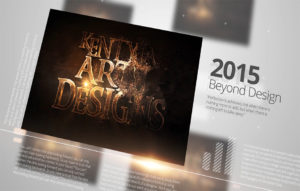
Beginning with a static graphics and animating it is easier, as long as you make the right preparations as you create the design. You should create the flat image(s) in vector format if possible, which means that they can be enlarged without any loss in quality. This allows for better control when it comes to animating. For example, when CJ Pony Parts wanted to do some content marketing around the idea of taking a stay-cation, they first had a designer create an infographic on the subject. Since the file was in vector format, it was easy for an animator to take it later and put it in motion.
Starting from scratch will require at least a little bit of forethought and vision. Creating a storyboard, not unlike those used in the creation of feature films, is usually a good idea. You don’t want to have to toss out a bunch of hard work later on if your vision or the needs of your project change along the way. Clarity Way’s recent motion graphic about the effects of bath salts took a lot of work – requiring the collaboration of a researcher, an illustrator, an animator, and a voice-over artist – but it all paid off when The Huffington Post featured it in their Weird News section!
The tools to create motion graphics are readily available, though they may cost a bit. Adobe After Effects and Apple Motion are great choices that make it easy to layer your content and add 3D effects to give the impression of movement. It’s infinitely more appealing to the average viewer than static content.
- Published in Marketing, Networking
The Importance Of A Great Website
THE ROLE OF YOUR WEBSITE
In a world where people stay online for most of the day, a standard website just doesn’t cut it. Depending on the product, up to 83% of consumers visit a company’s or service provider’s website before making a purchase. And as more and more consumers make decisions based on their online experience, the appearance, usability, and accessibility of your website is more important than ever, especially if you are in a competitive market.
Having a right understanding of your website’s role can greatly benefit your business. Think of it as an extension of your sales staff. In the same way you wouldn’t send out an unkempt salesman to represent your company, neither should you send out an unremarkable website to the consumer who is specifically searching for your product or service.
Working on a website is the ideal time to consider the rest of your branding as well – message, color palette, and logo. The worst thing you can do is invest in a well-built, mobile friendly website, and not have the proper design elements to make the website stand out visually.
EVALUATING YOUR WEBSITE
We mentioned earlier that your website is an extension of your staff, and just like you formally evaluate your team on a yearly basis, you should be doing the same thing for your website. Recommendations vary, but most agree that every 2-3 years you should consider updating the design of your website. But, you should also be making tweaks to the website throughout the year – offer new information, update pictures, and add any new products, services, or staff members – this is simple, routine maintenance.
Here are a few things to look at when evaluating your website:
- Have you added any services or products?
- Has your target market changed – expanded or tightened?
- Has your competition created a new website or branding that is stronger than yours?
- How do you rank on search engines for the services or products you provide?
- Is your website mobile and tablet compatible?
- Is the overall design up to date, fresh, and current?
- Is it easy for you to make small changes to your website?
If you answered yes to a couple of these, it’s probably time to consider a new website.
NEW TECHNOLOGY
About a year ago a major shift in website design occurred – Responsive Website Design (RWD) arrived. RWD allows your website to automatically resize and reconfigure its layout based on the device it is being viewed on. So, whether your consumer is viewing your website on their desktop, their tablet, or their phone, they are seeing the appropriate version. The reason this is great news is that it has eliminated the need for maintaining two websites – a desktop and a mobile. This cuts costs and saves you time, only having to update one website.
If your current website is not responsive, you should consider the potential downside to this. Over the last year, the percentage of traffic to websites via mobile devices has increased by 78%. As of quarter one of 2013, nearly 25% of all website traffic is derived from mobile devices. If your website is not mobile friendly or compatible, you are potentially losing out on 1 out of every 4 consumers. 2013 has been called the Year of Responsive Web Design.
Another feature, though not quite as new, is Content Management System Websites (CMS). These websites use a platform that allows the owner to easily make changes to the website without any software – just an internet browser. The days of relying on your web developer to make every little change to your website are over, which is great news. This means keeping your website fresh and up to date with current information is easier than ever.
If you are considering a new website, these are the first two questions you should ask the web developer – will it be responsive and will it be built with a CMS?
SEARCH ENGINE OPTIMIZATION
With over 650 million websites, and another 51 million added each year, there is plenty of online competition for your services. We looked at a few ways to make your website stand out aesthetically, but there are also ways to help it stand out on search engines. Being on the first page of a Google search for your services is crucial to your online conversions.
Search Engine Optimization (SEO) is what helps your website rank well with search engines. There are several SEO services that can be performed on your website, both one time and ongoing. This is another factor you should consider when building a website; much of the SEO work is done during the website build, so be sure to ask early. This is a much larger topic and one we may revisit in a future article.
THESE DAYS, IT’S LIKE A BUSINESS CARD
Having a business card has been necessary for years and years. Websites have become just as necessary. It’s expected and it has become a major component to the consumer’s decision process. Even if they learn about your company through a trusted referral, at a sponsored event, or in a meeting with you, before they make a final decision they will visit your website. Make sure it looks good, functions well, and clearly communicates your company’s goals.
The Importance Of Industry Publications
Just over the last few years, countless reasons have been given to explain why print advertising is no longer a sensible marketing investment. First, there was social media marketing. Then there were all of the “bright and shiny objects” that fall under the social media umbrella. Foursquare, the platform that allows you to “check in” to locations, was far more important than print advertising. Then it was Quora, the question and answer platform. Pinterest, Instagram, and now content marketing have all been presented as better investments of time and money than print advertising.
We can’t say that all companies should be investing in print marketing today, just as we can’t say that all companies should be investing in social media marketing today. KAD has worked with a client whose industry is steadily moving away from strong print publications and more towards white papers, webinars, and more. As a rule, however, especially in the Business-to-Business world, we still believe that industry publications are important. Here are a couple of things to consider.
1.)Audited Circulation
Although not all publications are audited, certainly, many key industry publications are. This takes the guesswork out of your company’s media buy. An audit from an auditing company like BPA or AAM (formerly ABC) will not just tell you how many people receive the magazine, but you will also learn the geographic distribution of the audience, what job positions are reached by the publication, and more. This can tell you whether the publication is a good fit for you and can also help you hone your message so that it has the most impact for that specific audience.
2.)People Trust Magazines
Last, but certainly not least, magazines remain credible. On September 23, 2013, Nielsen released a report on marketing trends, including what forms of media were seen as the most credible. The report notes, “Sixty percent of global respondents trusted ads in magazines, an increase of four percentage points from 2007.” Think about that. In the face of social media, content marketing, and all of the hype about how print is dying or dead, people actually have increased their trust in print magazines over the last six years.
As we said at the beginning of this post, print advertising may not be a good match for your company. However, if you are not sure whether print advertising is a good match, our advice is not to dismiss it out of hand just because so many people say print advertising is now “out of fashion.” As with all marketing tactics, do a little research and see what is happening in your industry. You may find that adding print advertising to your 2014 marketing campaign turns out to be a great strategic move!




